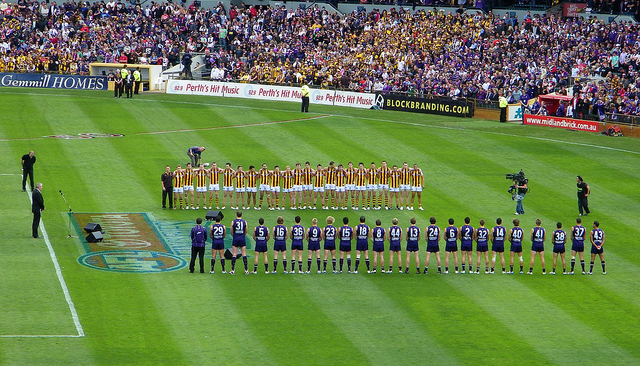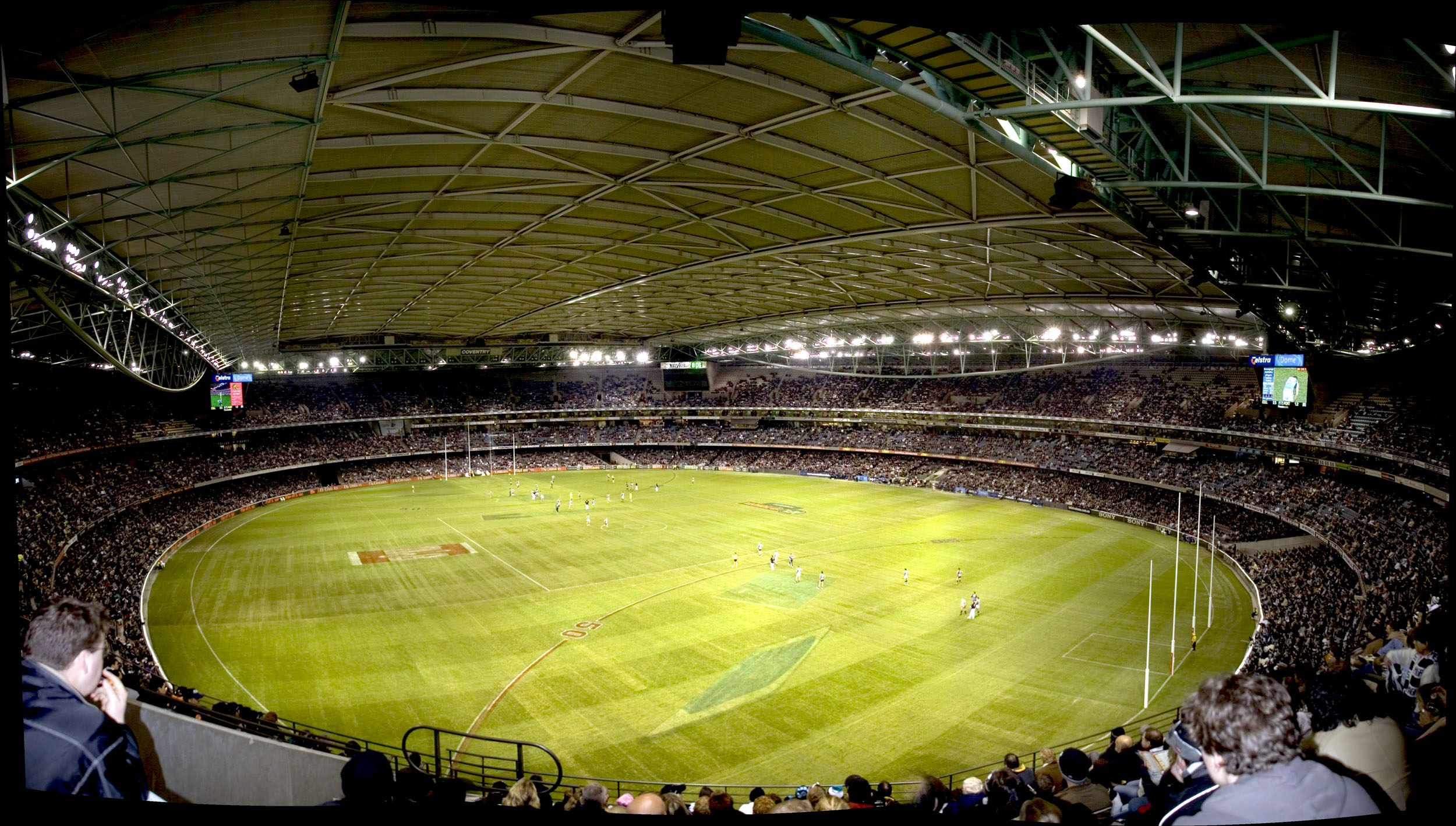
Could the secret to AFL premiership success lie within our technology? Image: Michael Spencer.
Footy finals fever kicks off tomorrow afternoon with the Hawthorn Hawks taking on the Freemantle Dockers at the MCG. And what better way to get into the spirit than to don your team colours, throw a snag on the BBQ or down a cold one while watching the game at your local pub?
But, if you’re like us, then you’ll probably be interested to know a fact or two about the science secrets behind these AFL finalists.
Let’s take a look:
- Hawthorn are the in the grand final for the second year straight after losing to the Sydney Swans last year. They last won the premiership in 2008.
- Fremantle are playing their first grand final in their 19-year history.

Catapult’s existing GPS athlete tracking devices are great but don’t work indoors or in covered stadiums.
So what’s the secret to their success? Players, skill and coaches aside, there may be a secret weapon. Both Freemantle and Hawthorn have been using an elite athlete analytics device developed by Aussie company Catapult Sports. Hawthorn was the first AFL team to use the technology, while Freemantle has been using it for the past 5 years. A coincidence or not given their history in premiership matches, we’ll let you decide!
The tracking devices are worn by the players underneath their jerseys and give coaches all the analytics they need on their players whether on the training field or in competition. They beam information to the coaches’ computer via GPS relaying numbers on each player’s location, speed, their heart rate and all their vital statistics, allowing the team to do tactical analysis in real-time and understand when players are fatigued.
Unfortunately, GPS works fairly poorly in indoor and partially covered stadiums where some of these sporting matches take place. Our scientists have been working with Catapult for over a year now, cooking up the next big thing in athlete tracking that may well be used to give that winning edge to next year’s grand final winner.

When Etihad stadium is closed GPS signals from athlete tracking devices can’t reach satellites, ClearSky is a new wireless solution based on our WASP technology. Image: Wikimedia commons.
ClearSky is a new indoor solution based on our Wireless Adhoc System Positioning (WASP) technology that will not only work ten times more accurately than GPS in outdoor stadiums like the MCG, but also in stadiums that are partially or completely covered like Etihad stadium.
The technology is highly accurate down to 20cm, can overcome noisy signal environments, such as thousands of spectators on mobile phones, and has been integrated with other inertial, heart rate and ball tracking sensors. In the future it could even be used to stream real-time data on players to broadcast media around the world.
Just recently, ClearSky even took out two Sydney Division Engineering Excellence Awards in the ‘Software and embedded systems’ category as well as the President’s award.
We’re chuffed about the upcoming release of ClearSky and it’s potential to be used by 300 of the most elite sports teams and institutes worldwide.
Learn more about the ClearSky system and our wireless athlete tracking technology below.

